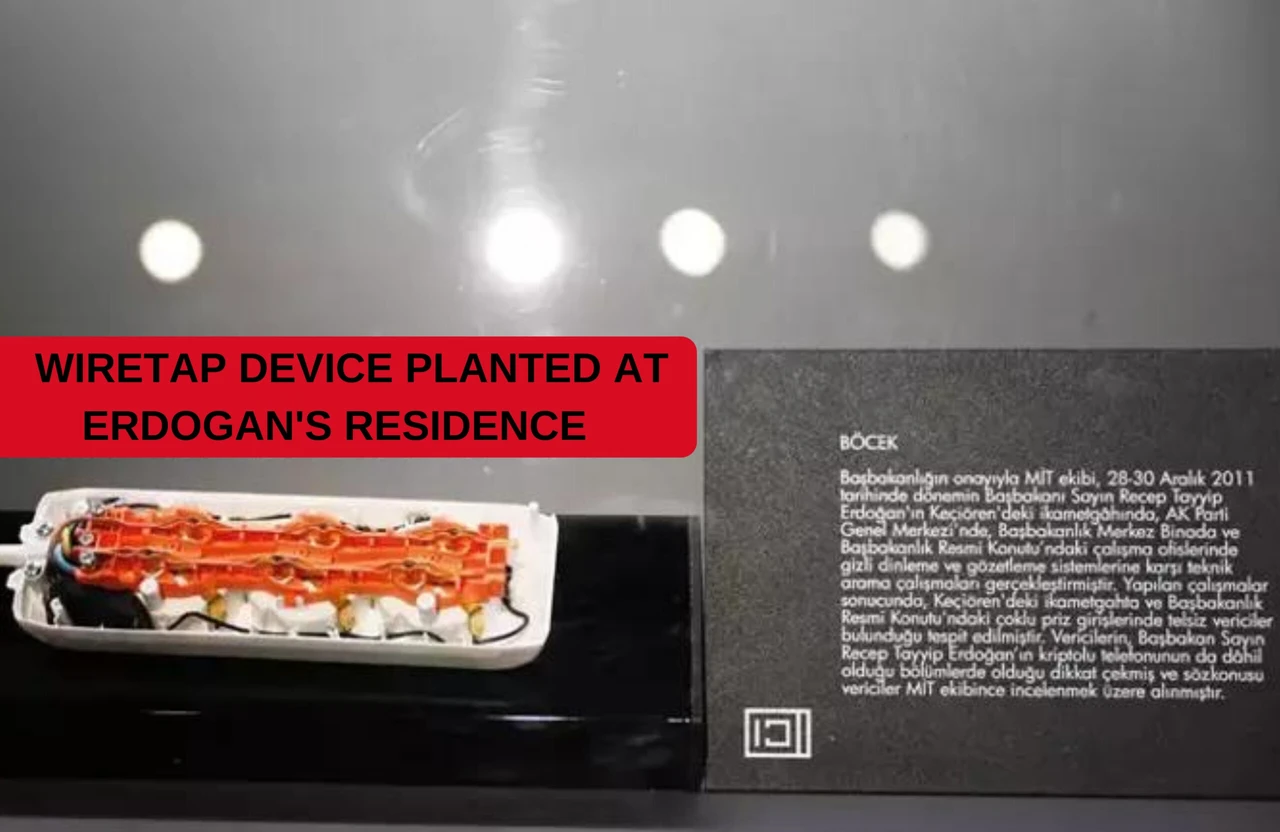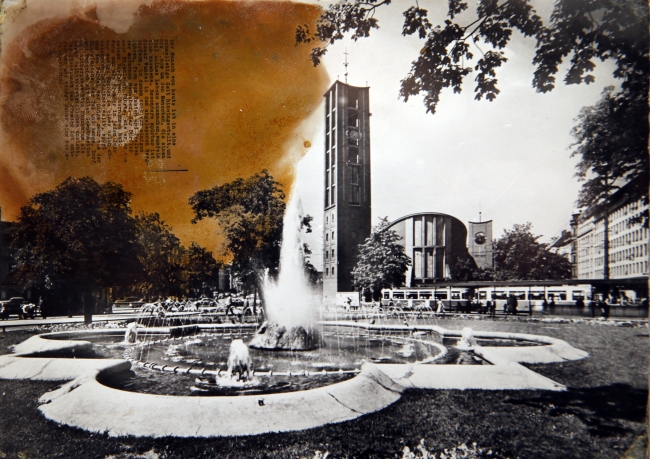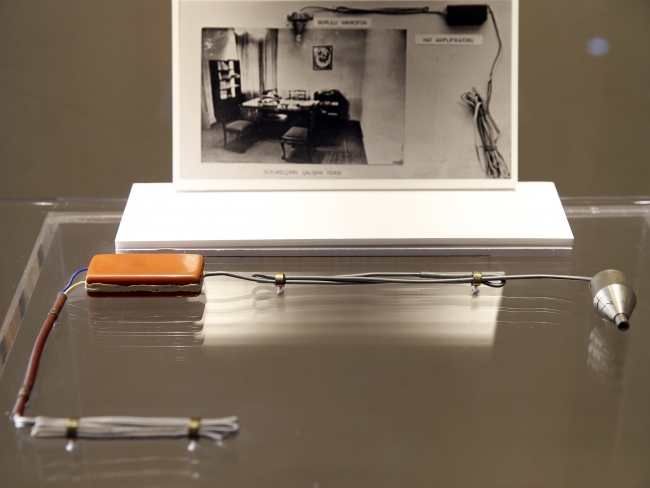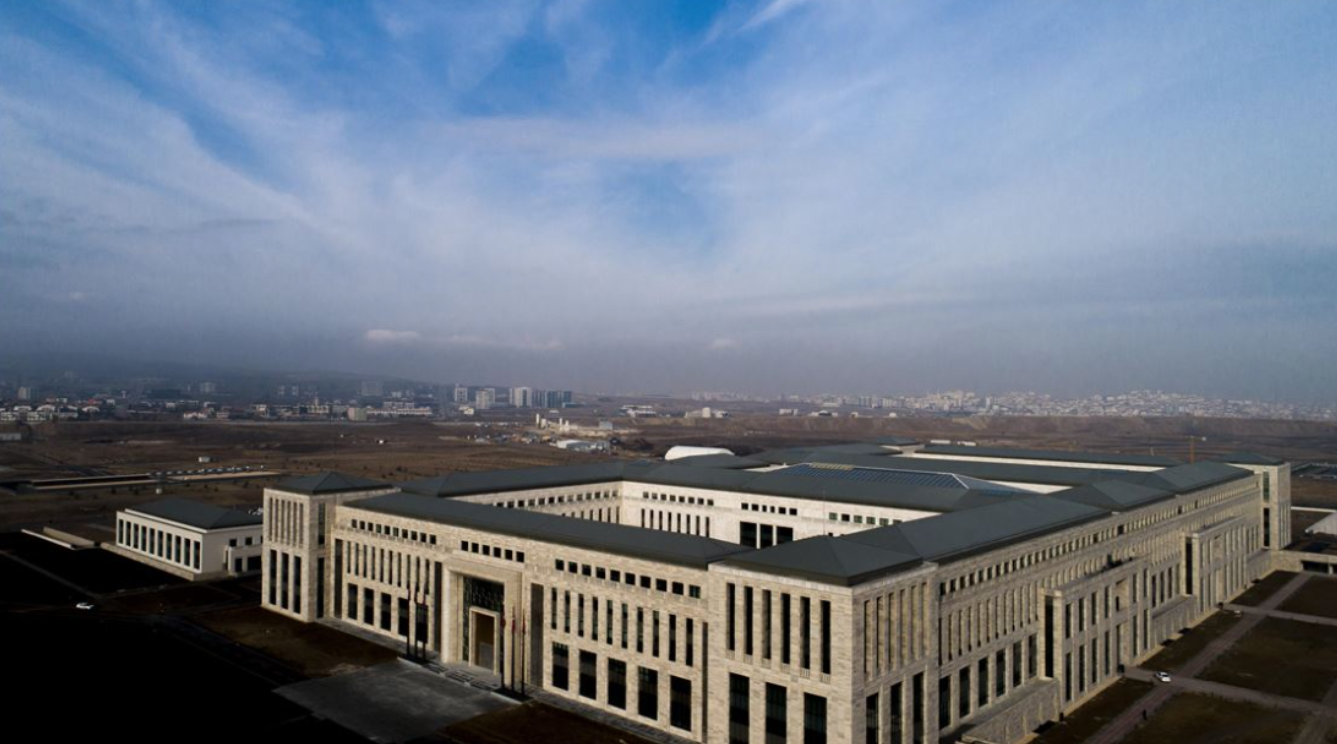Turkish Intelligence Museum displays wiretap device planted at Erdogan’s residence
 Wiretap device planted at Erdogan's residence, in MIT Museum, Ankara, Türkiye (Photo by Hurriyet)
Wiretap device planted at Erdogan's residence, in MIT Museum, Ankara, Türkiye (Photo by Hurriyet)
A wiretap device covertly planted in President Recep Tayyip’s residence socket has been unveiled as a centerpiece exhibit at the Türkiye’s National Intelligence Organization’s (MIT) Museum, shedding light on past security breaches and espionage tactics.
Located in Türkiye’s capital Ankara, MIT’s new campus named “KALE” (Castle) houses the Intelligence Museum, offering a unique perspective on Türkiye’s intelligence history.
Opened with a ceremony attended by Erdogan, the MIT Museum traces 97 years of accumulated history, shaped around three core concepts: “Homeland, Tradition and Future.”

Historical stations: Trace, memory, path, eye, target and pride
The museum features six distinct stations focusing on MIT’s significant operations and intelligence techniques from the past to the present.
Each station shares details with visitors through historical documents, covert communication devices, and operational insights. The walls display concise quotes and leadership principles from key figures in MIT’s history.
Secret techniques, equipment used in operations
One of the museum’s most captivating sections showcases covert communication and surveillance techniques used by intelligence operatives in the past.
Details such as listening devices concealed in shoe heels, cameras disguised as tie pins and encrypted messages written on soap and stones vividly depict the behind-the-scenes world of intelligence.

Exclusive footage and documents: July 15, Ocalan operations
The museum reveals the technological evolution of the MIT throughout its history. According to Hurriyet, the most striking artifact in the museum is a listening device. This device was found in President Erdogan’s office in his Kecioren residence during his tenure as prime minister. The artifacts range from historical technological threats to the digital espionage equipment used today.

From bugs to digital threats: MIT’s technological evolution
The museum showcases MIT’s technological evolution throughout its history. Exhibits range from historical technological threats such as radio transmitters found in President Erdogan’s office during his tenure, to contemporary digital espionage equipment used today.
Cultural, architectural depth: ‘Kale’ campus
Designed drawing inspiration from Ottoman architecture, MIT’s new campus ‘Kale’ seamlessly blends Turkish-Islamic aesthetics with modern technology, tailored to meet MIT’s security and operational needs. Every detail underscores Türkiye’s strategic importance.
The MIT Museum not only offers visitors the chance to explore Türkiye’s intelligence history but also highlights the country’s contributions to security and intelligence efforts. This museum serves as a testament not only to the past but also to an institution dedicated to safeguarding the future.

What is MIT’s history?
Established in 1913 to protect the homeland, the Special Organization (Teskilat-i Mahsusa) laid the foundation for MIT.
Although disbanded during World War I, this decision remained on paper as numerous intelligence organizations, large and small, were established to organize the War of Independence.
The Turkish intelligence community played a crucial role in the victory of the national struggle by forming many secret resistance organizations such as the Karakol Society, Yavuz Group, Mujahid Group, and Armed National Defense (MimMim) Group.
With the establishment of the Republic, this fragmented structure officially consolidated under the name National Security Service (MEH/MAH) in 1927, and later as the National Intelligence Organization (MIT) in 1967.
In 2017, MIT was placed under the Presidency.
An exhibition featuring weapons and swords used by the Special Organization in the Ottoman era will open its doors to visitors on Monday, March 5.



